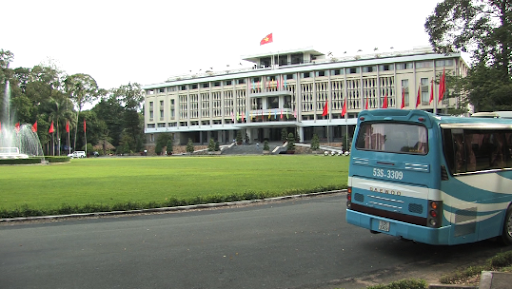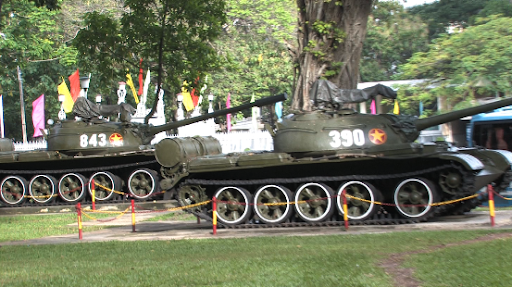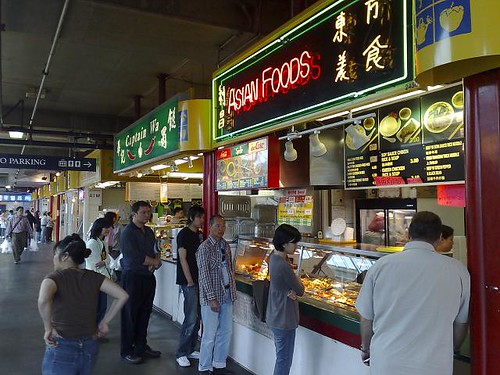
A sightly beach and turquoise waters nearly line the main landing strip at Phuket airport, setting the tone right for the scores of sun worshipers as they touch down.But first-time-Thailanders will quickly find that there is a lot more to the country than water and sand.
Granted, Thais are out to make a buck and swarm Westerners, hawking "Taxi!", "Massage!", Cigarettes!", and a few other choice goods and services. But break out past Phuket and its prodigal Patong Beach, and you begin to get a better sense of what this country and its people are about. In our view this is a must-see country. But be advised: when it is high season, go to where it is low.
The American
Jump to Tang Sala, on the Thai island of Ko Pa-Ngan. Tang Sala is the main port town of Thailand's second largest island in the Gulf. Together with Ko Tao and Ko Samui, Pa-Ngan balances Thailand's island offerings on the West side of the peninsula, such as Ko Phi Phi and Ko Lanta in the Andaman Sea.

It's 10:00 at night, and Kate and I stand at the docks talking with a Danish couple, waiting to board an overnight ferry to Surat Thani, on the eastern shore of the mainland. The boyfriend is a paramedic; the girlfriend a nurse - both are taking a break from the dreary winter of Northern Europe for an island hopping tour. Our idle chatter is interrupted by an American man in his late 50s holding a half empty one-liter bottle of Thailand's premier local brew: Singha.
Highjacking the conversation, he tells us how the boat he lived on in Florida was swept away in a hurricane and that he will head back to the States when his insurance claim comes through (he's been waiting five years) or when his social security starts coming through (will have to wait another five years), whichever comes first.
The American has been retracing the steps of his adolescent travels. His father had worked for the CIA through the 50s and 60s, likely intwined in the goings-on in run up to the Vietnam War. Thailand was the primary base of operations for the U.S. army during that era.
He barely recognizes the people anymore, he says. "They're out for the money these days - no smiles without dollars." And the landscapes have changed drastically - from deserted beaches to lines of bungalows and resorts, which have supplanted Pha-Ngan's wreath of mangroves. He is looking forward to returning to Florida.
We boarded the ferry and chatted for a while longer about things of less consequence. Turning in, he left to brush his teeth and then lay down on a disgusting mattress next to a snoring monk.
I retreated to the stern, into the roaring of the diesel engines, to crack open a Singha of my own and watch the wake chase the dimming port town. I thought about the American's disappointment, and how it was in such stark contrast with the incredible time I had just had on Ko Pha-Ngan.
Dodging the Full Moon Party
Ko Pha-Ngan is roughly the shape of a "Q". The "O" of the "Q" is is dotted with fishing villages, rocky and sandy beaches, the ubiquitous bungalows, and, admittedly, a number of eyesore resorts. The interior is carved up by meandering roads, dominated by mopeds and tuktuks, a covered pickup with seats along its bed for 10 or so passengers.

The jungle bubbles up in the center of the island, pushing the roads up in steep in- and declines. The island has its own special brigade of ambulances that comb the network for injured tourist moped drivers who haven't quite mastered the technique of peaking hills with 15 horsepower (imagine driving up Lumbard Street in a John Deer). They ascend sure enough, but halfway up the hill, they realize their acceleration won't get them to the top. You can't go down backwards (too steep), and you can't go up (also too steep), so they plop on their side, pinned down by their vehicle until help arrives.
Spring- and rain-fed streams also cut through this mountainous jungle in steps of water falls and turgid pools until they make their way into the Gulf of Thailand. Clambering to worn ropes and vines, Kate mustered the courage to climb the slippery stones of one such waterfall and jump off a boulder into a pool, not knowing for sure where the submerged rocks below might lie.
And so the island continues, peppered with Buddhist temples and lookouts with magnificent vistas, the smell of burning leaves and bark mixed with the scent of lime, curry, and seafood as you pass through the towns. A fine way to take it all in is to stand on the tailgate of a tuktuk as the driver darts to the destination - part safari; part roller-coaster.
Roads don't get you everywhere on this island. To reach the isolated coves and beaches, visitors need the utterly endearing long-tail, a shallow-hull boat equipped with a noisy motor and a propeller at the end of a long shaft. This construction allows drivers to quickly pull the prop out of the water to avoid rocks and coral. A heavy beam in the front acts as a counter balance to the long engine apparatus, and is arguably the most appealing part of the vessel, adorned in ribbons in veneration of the Buddhist gods - that they may protect the boat, its captain and cargo.
Moored above the reefs, the long-tail is the ideal platform for snorkeling. Just roll off the side and you're in the thick of Thailand's ocean life: pufferfish, fan, shelf, and branch corals, crabs, pairs of angelfish and schools of sardines.
Moving from the "O" to the stem of the "Q": This little peninsula, known as Hat Rin, sends out mixed signals. Sunset beach, on the east, offers the quietude found on most of the island. Sunrise beach, on the west, on the other hand, is a venue for mass debauchery and shenanigans, mostly during its renowned Full Moon Parties. The bohemian town separating the two beaches becomes inundated with revelrous party goers from all over the world, who kick it on the beach with infusions of alcohol and other choice substances.
The popularity of these parties has grown so much over the years that Hat Rin now holds parties for each of the moon cycles. Although not adverse to a fine selection of drinks, Kate and I simply didn't have a sufficient number of tattoos and piercings to partake. All for the better, I suppose, considering the full-mooners didn't get going until around midnight, peaking with the sunrise. Sunrise was when Kate and I usually sprang out of bed, bent on the next jungle tour, snorkeling trip, or elephant ride.
Irresistible tourism
And this is where I began to empathize with that middle-aged American. While growing up there in the 50s and 60s, in spite of linguistic, religious, and cultural barriers, this man got on with the Thais. Sharing time and experiences with one another, feeding one another's curiosity and learning - simple human fellowship. Now when Westerners step off the boats, many Thais just see dollar signs (or bhat signs) with legs.
On our way out to Sail Rock for a day of diving, our dive master, a retired British officer quite familiar with the island, filled us in a little on this point. "When someone comes up with a good idea for business here on Ko Pa-Ngan, Thais from all over the country move over here, copy the idea and offer it up at a lower price," he says. I guess that's capitalism, but when I later told the American about this, he chuckled, and noted, "It wasn't always that way."
Whether for the partying or for the attractions, many people come to Ko Pa-Ngan - and to all of Thailand for that matter - with beaches on the brain. I admit, I did too. I wanted to snorkel, dive, and chill, and perhaps do a few tours. But can I honestly say the people of Thailand were an incentive? Unfortunately not. Fortunately, spending two days with our tour guide Jay, a young mother native to Ko Pa-Ngan slapped my brain out of selfish mode, at least for a while.
Jay runs tours to support her young son. He stays with his grandmother during the day, while Jay works from 6 a.m. - 10 p.m., guiding mostly Brits and Germans across the island via tuktuk, longtail, and elephant. Her earnings go toward his schooling, which is not even subsidized by the Thai government. She had darker skin than most Thais, which made her huge smile that much brighter. And she did love to smile - and laugh - and make everyone around her laugh.
Jay collected us along with a group of English gals from our bungalow resort, near sunset beach (the lax beach on Hat Rin). This was our introduction to the island's inland sights. The next day she escorted us on a long-tail to several bays and beaches. Her boss, Gon, a portly, feisty man with inexhaustible enthusiasm, joined us on one day as well, spurning us on up the cliffs. Tour operator by day and bartender by night, Gon had a devious habit of poking your belly or grabbing your foot and massaging it when you didn't pay attention to him - then asking for 200 baht for the privilege. When the conversation got stale, he broke out in Thai song...and didn't stop for a good 10 minutes.
Ultimately, the chats with Jay (and serenades by Gon) between destinations - about the direction of the country, their interpretations of the tenets of Buddhism, the trials and tribulations of making ends meet, and the best places to find good food and cheap beer - were just as memorable as the activities. And, no, they weren't just fishing for bigger tips.
So it's a two way street, I guess: If you not only make the effort but go out of your way to learn from and understand the background and motivations of Thais scratching by, they may go out of theirs to see you as something different than a dollar bill.
Unavoidable tourism
A meteor shower scraped the night sky half-way to Surat Thani. A few hippies had set their alarms on the sleeper boat to make sure they didn't miss the show. A girl in her early 20s reluctantly got off her pre-soiled mat and leaned out a window for a look.
The hippies were heading home or to the beaches on the other side of the peninsula - probably after some yoga retreat or jewelry-making course. We, too, were on our way to the islands in the Andaman, in total a 26 hour trip with boat and bus from Tang Sala to Ko Phi Phi Don. It was here where we encountered a Thailand overrun by the tourism trade.
Don's beaches were sublime; its waters everything the brochures say they are. Its close neighbor, Ko Phi Phi Leh, was the choice backdrop to the film version of "The Beach," starring Robert Carlisle, Tilda Swinton, and of course slender stud Leo DiCaprio. Indeed, at the bus station in Surat Thani, while we waited for the line to take us to Krabi, where we would catch the ferry, a curt Thai lady ritually dropped in the DVD to get travelers in the mood. But what "The Beach" and the brochures fail to show is the throngs of boats in those pristine coves and the loud crowds of tourists that shroud the stretches of sand.
When we pulled into Maya Bay on Leh with our tour group for a bit of beach combing and snorkeling, we entered the maritime equivalent of a tailgate party (but without the beer). Boats moored a few meters apart and swimmers in every gap between them. On land, plump and pasty Europeans let their skin sizzle on the beaches.
The kicker was hands-down the large cruiser that came in from Singapore. The large vessel moored furthest out from the beach, and dropped its human cargo into the water around it. Each Singaporean wore the standard mask and fins, but also a bulky yellow foam life vest. It was a hilarious sight, as they bobbed their faces into the water for a look and were then pulled back by excessive buoyancy - for nought as it were, as at the depth their boat had moored, they were at least 20 meters above anything visible. I felt I was watching a parody of another DiCaprio movie - Titanic - as the masses of Asians flailed about around the boat reaching for each other in desperation.
The day trips on Don were nonetheless fun, and we saw an array of sea life. But after two days of experiencing these islands processing their tourists almost in assembly-line fashion, it was time to head home. There were no Gons or Jays to be found here - only dollar bills with legs.








.JPG)



